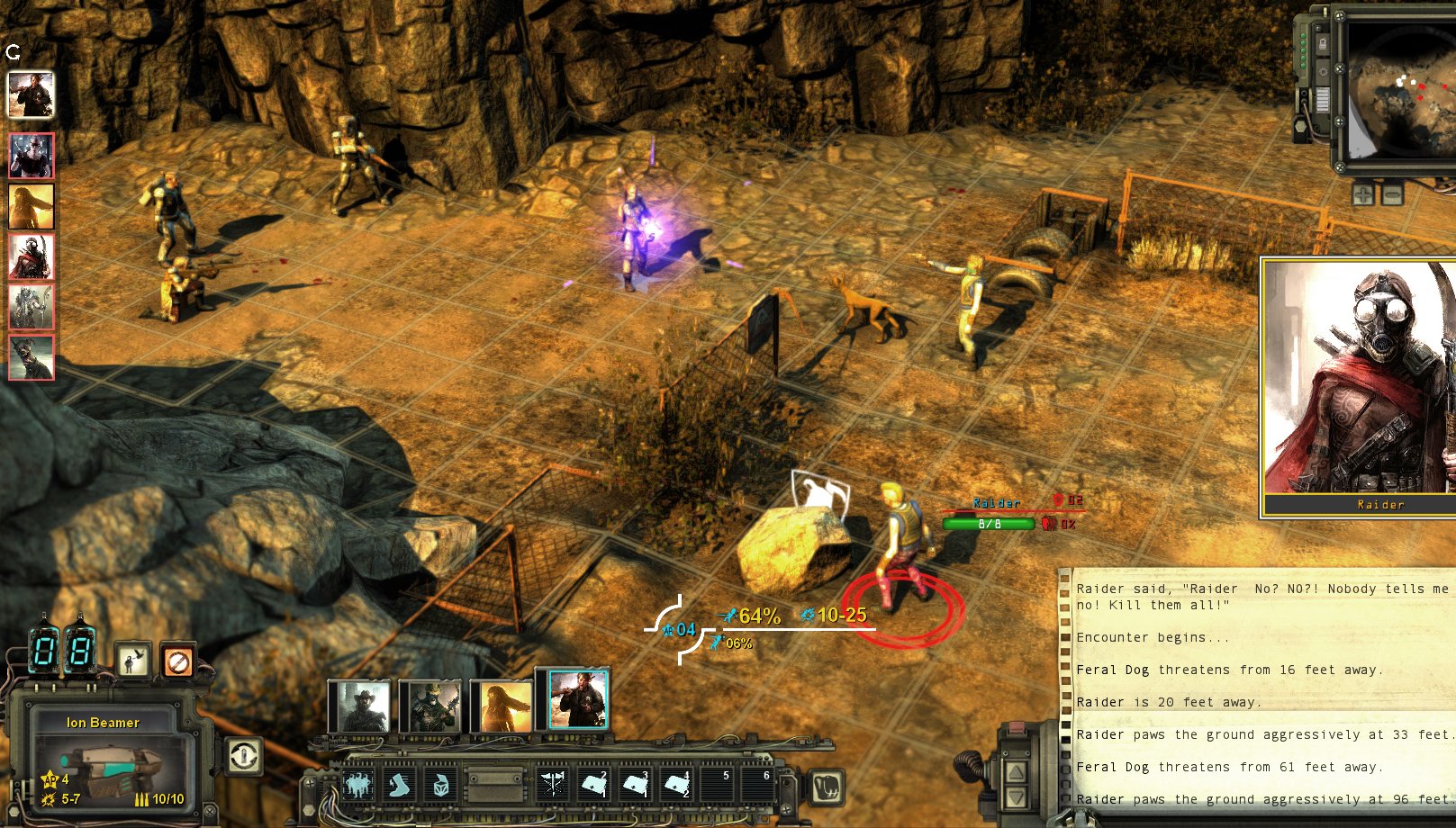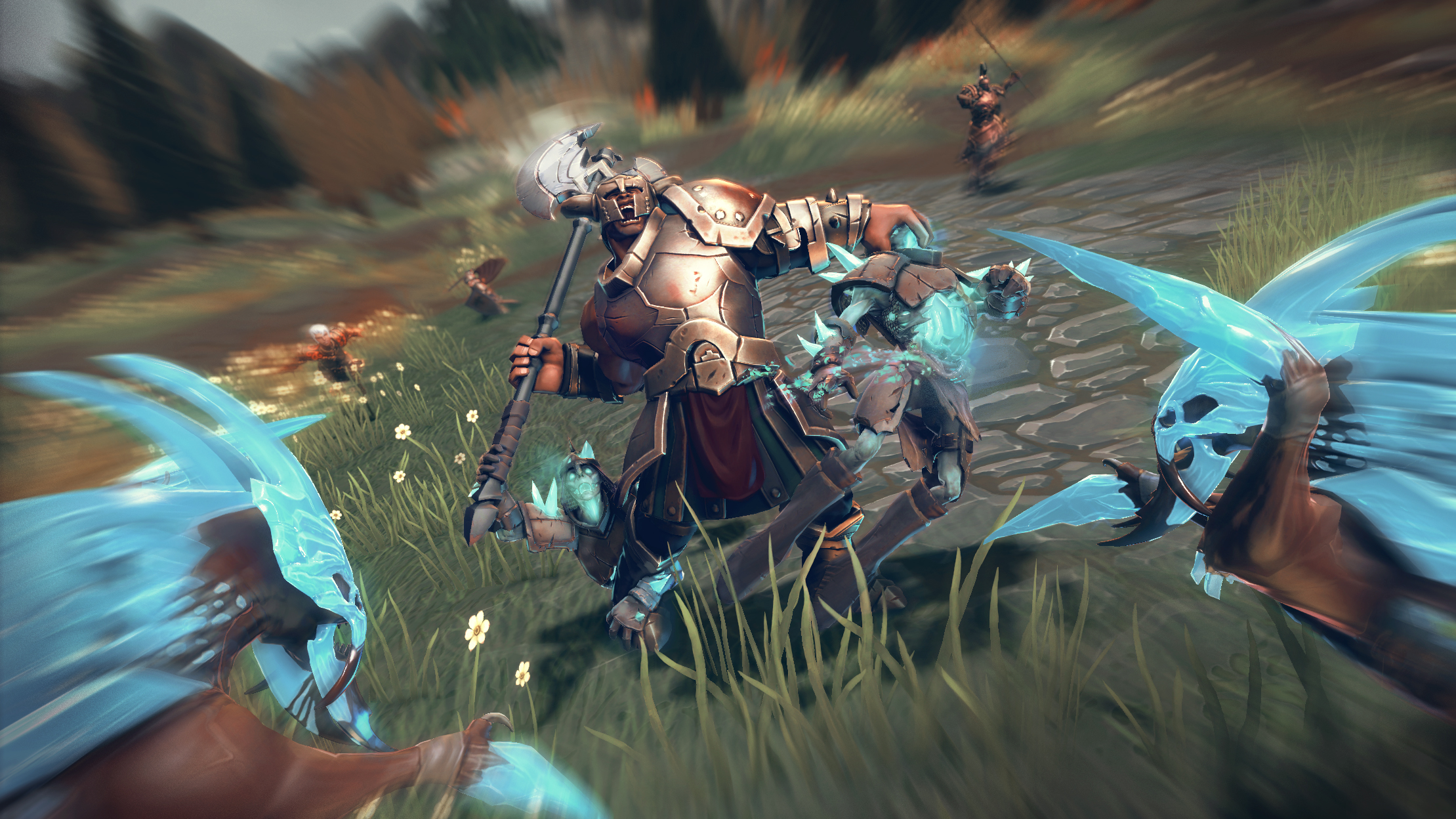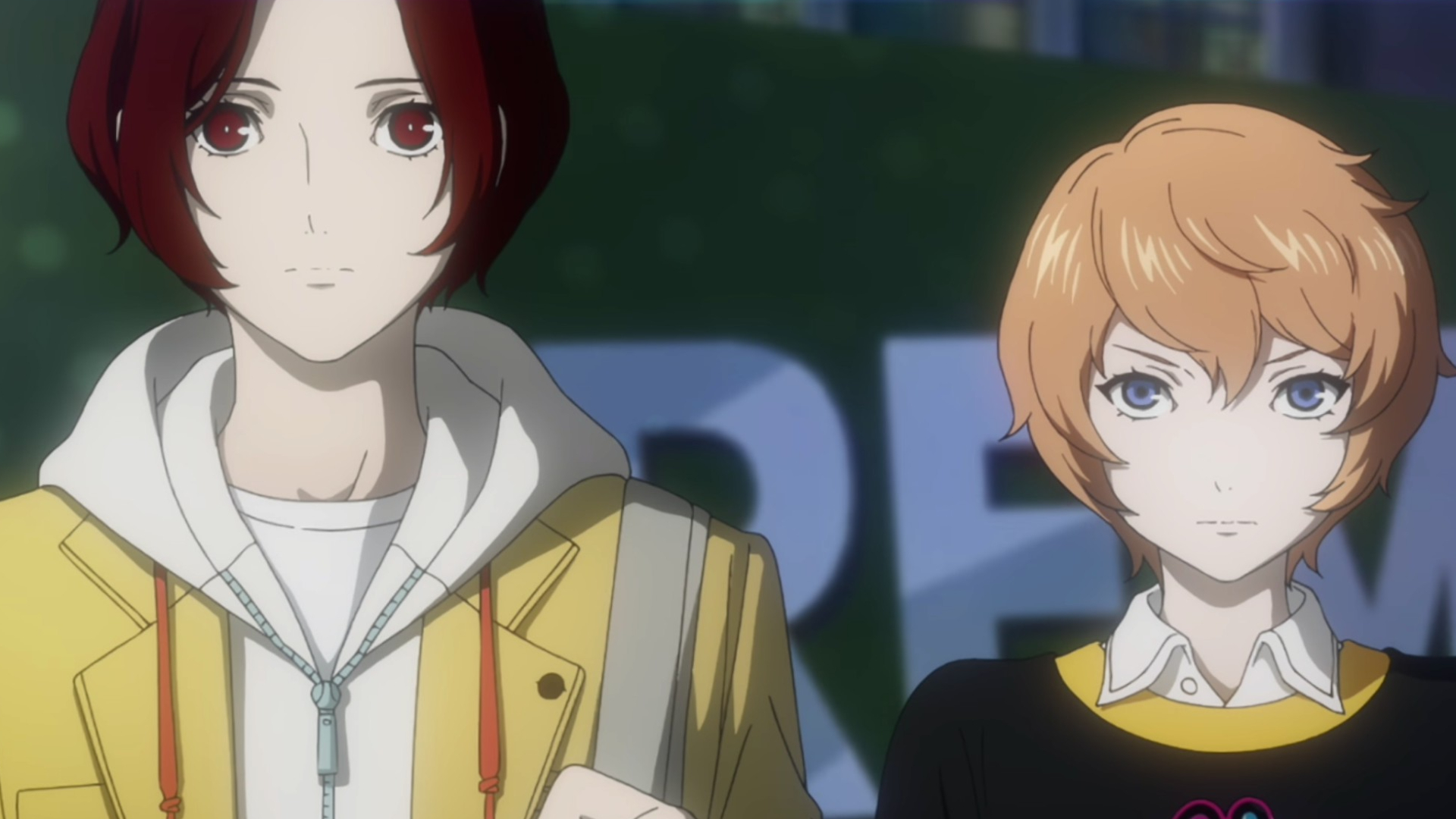Brian Fargo, Josh Sawyer, and Gordon Walton on the history and future of RPGs

Can you think of any moments in the design of Wasteland 2, for example, where you encountered dialogue or some element where you were just like, ‘Oh, that doesn’t fit,’ and explain?
BF: I remember the writers wanted to put some guy called The Sperminator in, which I thought was funny but overly childish. I don’t know that it would have broken the whole thing, but he felt very strongly about it and I hated it, and so we didn’t put it in. So there’s oddball stuff like that, but you extrapolate that over hundreds or thousands of those little decisions that you make.
I mean, [there was] big debate about whether we should go to LA or not [in Wasteland 2]. Everybody brings their own viewpoint to a product, right? The finance guys, they don’t care about the quality, they just want to stay in business. And that's okay, that’s their job. And the artists, they've got their own perspective, and the special effects and the programmers, every piece of code has to be right. Everybody has got to make a trade-off somewhere along the line, and again, I help make those things, where there are trade-offs. But a big part was whether we should go to LA or not, because in Wasteland 2, you finally get to LA and you’re like, ‘Oh my God, I’m only halfway through the game.’ It’s a wonderful moment, but was that worth it or not? Especially knowing 'x' percent of people don’t even get past the halfway point.
But I felt like that was the right call to make, because I wanted to do something that—We had crowdfunded it. A lot of crowd-funded titles, they just barely check the boxes. ‘Yeah, they delivered,’ right? But I wanted to over-deliver—like, ‘These guys nailed it.’ So for me, it was critical that we deliver that second half of the game, even though I knew that a large percentage of people wouldn’t even play it. But in the totality, for everything that was at stake, it made perfect sense.
"I remember the writers wanted to put some guy called The Sperminator in Wasteland 2." - Brian Fargo
JS: What I try to do, with word-building, is I set up some high-level rules, like ‘Here’s what this world is about, what these themes are,’ and then I also make a list of, ‘This is not what it’s about, just in case you thought maybe that this fit in here. This does not fit in here.’ And then what I do is, as people are making content, I review their docs, I write region design constraint docs, which are high-level, like, ‘In this region, this is generally the stuff that’s going on, so work within that and the established rules.’
Then when I start looking at the content or people come up with ideas, that’s where it’s more of a negotiation. Sometimes I’ll go, ‘Okay, that absolutely doesn’t fit because of these reasons.’ Sometimes it’s more like—for example my area lead, great guy, great designer, he loves classic D&D stuff, and so sometimes he’ll be like, ‘I want to put a Death Knight in.’ And I’m like, ‘Okay dude, how does that fit into this? How does that fit into the world? I’m not saying that’s a bad idea, but work with me. We kind of have established how undead work in this world, so how does a Death Knight , or whatever we call it—I think it was actually a Death Guard—How does it fit into the world? Just work with me a little bit on it.’
Sometimes people come up to me and they say, ‘I want to put in this,’ and I’m just like... Like you said, it’s either too silly or just it seems weird, so I’m like, ‘I think it is cool, but not here.’ And so you just have to make those calls as you see them, and work with people, because, again, you want them to feel invested and like, ‘Yeah, I get to do my cool thing.’ So he got to do his Death Guard, Lord Raedric, and a lot of people love that fight, so great.
Keep up to date with the most important stories and the best deals, as picked by the PC Gamer team.
BF: I was having a meeting last week, and there was some UI stuff we were working on for a different title, and there was this slider dial or something. I’m like, ‘Nah, I like everything else you said but I can’t do that. I just don’t like it.’ So he says, ‘So basically we have a policy against slider dials?’ You’re like, ‘Oh, exactly. Yeah, that’s our policy, no slider dials.’ We just laugh about it and move on, but, for some reason you make that call, ‘That just doesn’t feel right,’ because there’s this weird line between, we want to give people things they’re familiar with, right, because if it’s too weird then they can’t associate with it, but you also have to not do every trope. You have to break it out and surprise them. So between being familiar and surprising is the kind of magic.
GW: If you think about the production of one of these games, it’s less like an orchestra, where everybody has their sheet of music and they’re just playing it. It’s more like a jazz orchestra, right? So there’s some grammar to what we’re doing, but everybody is doing their own thing to the degree that they have the freedom to do it within their particular instrument.
"Between being familiar and surprising is the kind of magic." - Brian Fargo
And if you do it right it sounds harmonious.
GW: When it’s done well it’s awesome, right? And if it’s done wrong, it’s a complete mess. But I think that’s where there’s always a creative director/project director who’s watching what’s going on and making those little calls to get people back in their boxes while they’re still being super creative.
BF: But usually there is nobody in our organization that knows everything in the game. I teach people how to think, and so once they start rolling it becomes bigger than any one person can ever do, and they start putting in details—I can start to see what works out, what doesn’t work, then they start rolling and they put in things, and at the end we’re just putting all sorts of cause and effect that was never scripted anywhere but was within the play pattern. There’s no way on Earth me or my production guy could review every single nuance that’s being put in on an hour-by-hour basis, but I’ve got a team of ten scripters all putting it in, so you kind of trust the judgment of theirs. And so sometimes people are disappointed that I don’t know every single thing in the game, but that’s only because that means I did a good job of creating [such] a good team that they didn’t need me to know every single thing.
JS: Every once in a while, the game launches and someone’s like, ‘Hey, where’d this come from?’ ‘Ah, shit. I never saw that.’ But sometimes it’s cool. Sometimes it’s like, ‘Oh, I didn’t even know that was there.’

With both Wasteland 2 and Pillars of Eternity, you released the game and then months later did a massive patch. What was the process like of releasing the game and then having the experience of interacting with your community, looking at their criticisms, things that they requested for the game, also things that you maybe had wanted to get in but you hadn’t been able to, and dealing with the amount of time it was gonna take to make those changes and the monetary balance?
JS: We had a beta that was pretty good. RPG fans have very strong opinions, so things got pretty heated in our forums and in the offsites, because, we try to read a lot of the offsites just to kind of see what people are talking about.
BF: I just read it when I want to get in a bad mood.
JS: Yeah. (Laughter.) But we had a good healthy beta. We tried to address as much stuff as we could, but then after the game launched, of course, they didn’t play all the content so then experiencing all that content and then, you know, their criticism of how it plays through, balance of classes, people in our case not liking a lot of the itemization, or they really don’t like the stronghold, which I take responsibility for, of course. And so after that it was like, ‘Okay, what are the short-term things that we can do that are more like tuning and adjustment?’ I mentioned before, we changed our attributes post launch, what affected what, which is a pretty big change, put in re-speccing, because a lot of people asked for it, lot of class tuning, and then for 3.0, we were like, ‘Man, people are still really bummed out about the stronghold.’ Like Brian had said, we don’t want to just be a checkbox.
I felt bad that we had under-delivered on it, and so we were like, ‘Okay, so we’re gonna cut back on some of the stuff we’re doing in the second part of the expansion so that in the patch we can make the content to the stronghold better, and just give it out for free because that’s something we promised to put in the main game. So we just committed to that, we figured out how many resources it would take, we kind of choked a little bit, and then we said, ‘Okay, okay, no, we can do this. We can commit to it. Let’s figure it out. Let’s be smart about it.’
People responded very well to the patch. And I think if we had done something like, made a little DLC for the stronghold, I don’t think people would have responded well to it, because we did promise them a stronghold, we promised them something good, it didn’t meet their expectation, so it made more sense to just bite the bullet. And we actually learned that back at Black Isle when we made Heart of Winter. Some people were pretty bummed that Heart of Winter was as short as it was, and we felt bad about it, and we made Trials of the Luremaster and that was a free expansion that we gave out, and people responded very well to that. And so sometimes you’ve just kind of got to go, ‘We made a mistake. We have the resources to make it up to people,’ and then you just figure out how to do it.
"If I told my guys they had another year to work on Wasteland 2, they would do it. They would never stop." - Brian Fargo
BF: I think one thing you’ll find with companies our size, we’re all smaller companies obviously, is we place a tremendous value on goodwill. You have to really think about that, not just economics. And obviously we’ve seen opposite cases. So always you’re thinking about, if we have an opportunity to improve our product and give it away for free, we’re gonna try to get that done. Like for us, we did a major overhaul on stuff and things we wanted, but we also said, ‘Look, let’s bring it to console. That way we can use the future revenues to help pay for something that all the PC people get free.’ That was a win-win for everybody. So the upgrade they got was very significant. That’s how we were able to make that happen. And in general, hey, the more you work on a product and the more you iterate on it, the better it’s gonna get, and that’s always, always the case. And yes, if I told my guys they had another year to work on Wasteland 2, they would do it, they would take advantage of it, and they would never stop.
GW: Well, once you get feedback, right, the feedback is super valuable, particularly in the aggregate, because we only get a certain number of people that don’t play like they’re gonna play most of the time. They play differently in beta than they play in live, to some degree, and so suddenly when they’re playing for keeps it’s a different deal. And so I think that when you get that feedback, you want to respond to it, because if we don’t do this—I mean, we do it for the players in the end, right? We do it for their feedback, and if their feedback is, ‘I don’t like something,’ what do we want to do? We want to fix it. We want to make it better. We want to make it cooler. And you do miss the mark sometimes. You could talk yourself into all kinds of stuff that in the end, the players go, ‘No, no. Go back and fix it.’
JS: I think it’s important over time you learn how to parse through what people are saying, because their feelings are never wrong, their feelings are always valid. But they’ll say, ‘Do this,’ and it’s like, ‘Hold on, yes, I understand that you’re upset about this, but what you’re saying is not necessarily the solution,’ and so it takes some time and experience, and a lot of times it just takes a little bit of time and space for you to think about the problem, hear more people’s input on it, and then you can come to a conclusion. And it’s not the thing that the person told you to do, maybe it doesn’t make that individual person happy, but you can still make it better for everyone. Like he said, when you get more people and more feedback, you learn to parse through, ‘What’s the actual problem here? People aren’t happy, but what’s the solution?’
Next page: Despite what you may think, making a game is generally not a smooth and orderly process.

Wes has been covering games and hardware for more than 10 years, first at tech sites like The Wirecutter and Tested before joining the PC Gamer team in 2014. Wes plays a little bit of everything, but he'll always jump at the chance to cover emulation and Japanese games.
When he's not obsessively optimizing and re-optimizing a tangle of conveyor belts in Satisfactory (it's really becoming a problem), he's probably playing a 20-year-old Final Fantasy or some opaque ASCII roguelike. With a focus on writing and editing features, he seeks out personal stories and in-depth histories from the corners of PC gaming and its niche communities. 50% pizza by volume (deep dish, to be specific).

